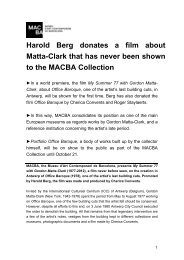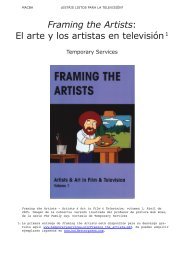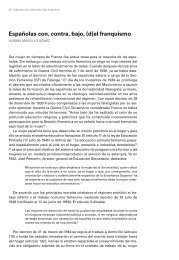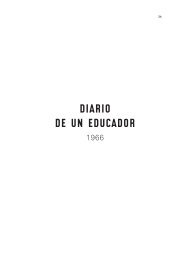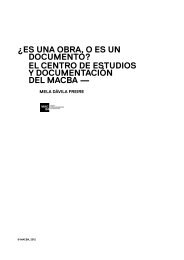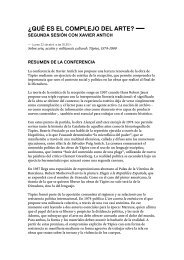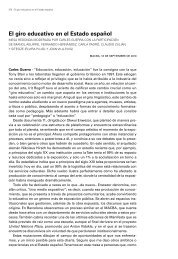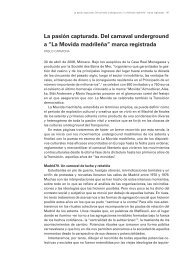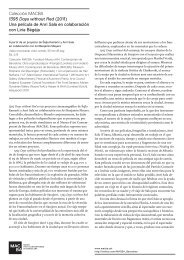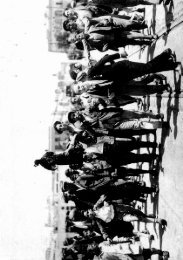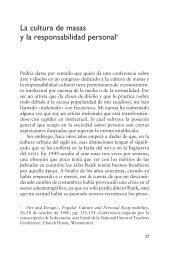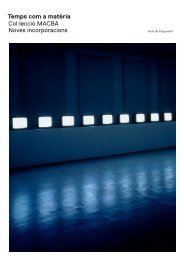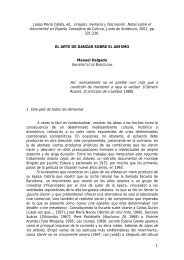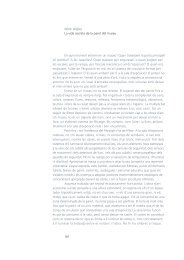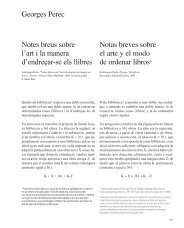14. John Cage, “[The New School],” in Kostelanetz, (ed.), p. 119. Dick Higgins performing Danger Music No. 17, 1962 degree to which his own aesthetic transformed over the course of the decade. Indeed, according to Cage, it was partially on account of the fact that his “musical thought was changing” that he decided to begin teaching at the New School. 14 Although it would not be possible even to begin to address the full range of Cage’s artistic reception, even on the subject of chance operations alone, it will nonetheless be worthwhile, as a necessary first step, to approach with some specificity the development of Cage’s techniques of employing chance up through the years in which his New School courses were offered. The results – drawn in part from musicology and in part from heretofore unexamined sources and resonances in the philosophy of Henri Bergson and Gilles Deleuze – will take us far from a simple notion of chance to a much more complex and sophisticated engagement with indeterminacy and multiplicity. From there we will return to the classroom to investigate further what there was to learn at the New School from John Cage. 213
15. John Cage, “Forerunners of Modern Music” (1949), Silence, p. 62. 16. John Cage, Letter to Pierre Boulez, May 22, 1951, in Jean-Jacques Nattiez, (ed.), The Boulez-Cage Correspondence, Cambridge: Cambridge University Press, 1993, p. 93. The epigraph to this article also refers to Cage’s soundtrack to Works of Calder and can be found in John Cage, Letter to Pierre Boulez, January 17 [1950], in Nattiez, (ed.), p. 48. 17. Boulez notes the resemblance of Double Music to cadavre exquis in Nattiez, (ed.), p. 29; Cage’s visit to the Bauhaus is noted in Christopher Shultis, “Cage and Europe,” in David Nicholls, (ed.), The Cambridge Companion to John Cage, Cambridge: Cambridge University Press, 2002, p. 22. George Brecht invoked cadavre exquis in regard to Cage’s “Music for Four Pianos,” eighty-four independent compositions (many composed via methods involving chance, although Brecht does not mention it), which could be played in any combination by as many as four pianists at once; George Brecht, <strong>Chance</strong>-Imagery (1957), New York: Something Else Press, 1965, p. 11. 18. These works, as Leta Miller notes, were originally titled “Sonorous or Exquisite Corpses“: Leta E. Miller, “Cage’s Collaborations,” in Nicholls, (ed.), p. 154. 19. Tristan Tzara, “Manifesto on feeble love and bitter love” (1916–20), in Motherwell, p. 92. 20. Moira and William Roth, “John Cage on Marcel Duchamp,” Art in America Vol. 61, No. 6, November– December 1973, p. 74; quoted in Richard Kostelanetz, (ed.), Conversing with Cage, New York: Limelight Editions, 1994, p. 219. 214 By the time Cage offered his first New School course, he had been associated with chance operations for half a decade. Music of Changes, Cage’s first manifesto presentation of chance, was completed in 1951 and debuted in at the Cherry Lane Theater in New York on New Years Day, 1952. Prior to that moment, Cage’s references to chance were somewhat occasional. In “Forerunners of Modern Music” of 1949, Cage mentioned the way in which using “radios as instruments” would deliver the continuity of sound production over to “accident.” 15 Around the same time, Cage incorporated field recordings from Alexander Calder’s workshop into his soundtrack for the film Works of Calder (1949–50), explaining to Pierre Boulez that “No synchronizing was attempted and what the final result is rather due to a chance that was admired.” 16 Previously, in compositions such as Double Music (1941), in which Cage and Lou Harrison wrote out their parts independently and then combined them, without alteration, into the final piece, Cage courted a different type of chance, one arising from the simultaneous performance of independent work (a procedure that Cage would continue to pursue throughout many years of collaborations with dancer Merce Cunningham). Although the inspiration behind Double Music came from Cage’s interest in the anonymity of collective production, associated with Gothic sculpture and embraced in the early Bauhaus (which Cage visited in 1930 or 1931), the method of combining two entirely separate creative endeavors resembled the Surrealist parlor game cadavre exquis (exquisite corpse) in which a drawing or poem is composed by different individuals unaware of each other’s efforts. 17 A few years later, Cage, Harrison, Henry Cowell, and Virgil Thompson would explicitly take up the Surrealist method in the twenty Party Pieces they wrote together in the mid-1940s. 18 Surprisingly absent from Cage’s earliest research is anything akin to the technique used by Marcel Duchamp in Erratum Musical (1913), in which vocal parts to be performed by Duchamp and his sisters Yvonne and Magdaleine were “composed” by picking notes at random out of a hat. When sung by all three voices at once, Duchamp’s libretto, a short dictionary definition of the verb “to print,” sounded as a chaotic and cacophonous “harmony.” Duchamp’s method recalls the recipe for Dadaist poetry in Tristan Tzara’s “Manifesto on feeble love and bitter love,” in which a newspaper page is cut up and its words drawn at random from a bag. “The poem,” Tzara noted wryly, “will be like you.” 19 Cage became aware of the musical precedents in Duchamp’s oeuvre only once he had begun his own investigation of chance operations – to which Duchamp responded laconically, “I suppose I was fifty years ahead of my time.” 20 Despite a superficial similarity, Cage
- Page 1 and 2: My thanks to Danielle Fosler-Lussie
- Page 3: 9. Dick Higgins, “[On Cage’s Cl
- Page 7 and 8: 27. Cage wrote to Boulez, “I then
- Page 9 and 10: 31. The exception being the first m
- Page 11 and 12: 39. John Cage, “Where Are We Goin
- Page 13 and 14: 50. John Cage, “Composition as Pr
- Page 15 and 16: 55. Ibid., p. 97. 56. Ibid., p. 103
- Page 17 and 18: 62. Ibid., p. 181. 63. Ibid., p. 16
- Page 19 and 20: 69. For Cage, such a critique of re
- Page 21 and 22: 77. Ibid., p. 261. On “unimpededn
- Page 23 and 24: 86. Hermann Braun, (ed.), George Br
- Page 25 and 26: 93. Brecht, p. 2. 94. Daniels, (ed.
- Page 27: 102. Ibid., p. 128. It is my specul



